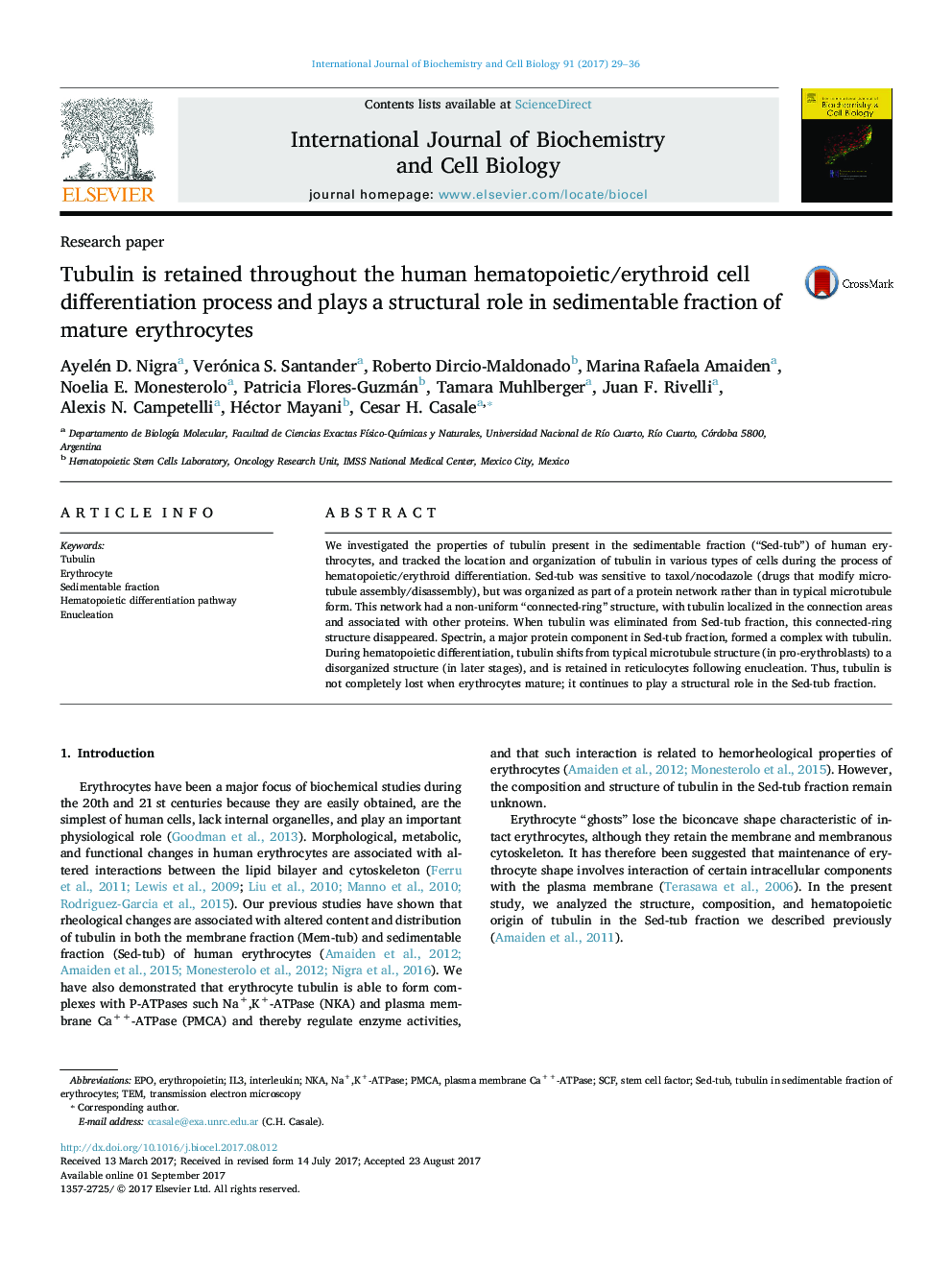| Article ID | Journal | Published Year | Pages | File Type |
|---|---|---|---|---|
| 5511293 | The International Journal of Biochemistry & Cell Biology | 2017 | 8 Pages |
â¢Tubulin in sedimentable fraction of erythrocytes (“Sed-tub”) is biochemically similar to tubulin in microtubules of precursor cells.â¢Sed-tub is not organized in typical microtubule form.â¢The presence of tubulin at low level is essential to maintain “connected-ring” structure of Sed-tub fraction.â¢Tubulin and spectrin are co-immunoprecipitated from Sed-tub fraction.â¢In later stages of hematopoietic differentiation, tubulin is retained in reticulocytes.
We investigated the properties of tubulin present in the sedimentable fraction (“Sed-tub”) of human erythrocytes, and tracked the location and organization of tubulin in various types of cells during the process of hematopoietic/erythroid differentiation. Sed-tub was sensitive to taxol/nocodazole (drugs that modify microtubule assembly/disassembly), but was organized as part of a protein network rather than in typical microtubule form. This network had a non-uniform “connected-ring” structure, with tubulin localized in the connection areas and associated with other proteins. When tubulin was eliminated from Sed-tub fraction, this connected-ring structure disappeared. Spectrin, a major protein component in Sed-tub fraction, formed a complex with tubulin. During hematopoietic differentiation, tubulin shifts from typical microtubule structure (in pro-erythroblasts) to a disorganized structure (in later stages), and is retained in reticulocytes following enucleation. Thus, tubulin is not completely lost when erythrocytes mature; it continues to play a structural role in the Sed-tub fraction.
Graphical abstractDownload high-res image (150KB)Download full-size image
